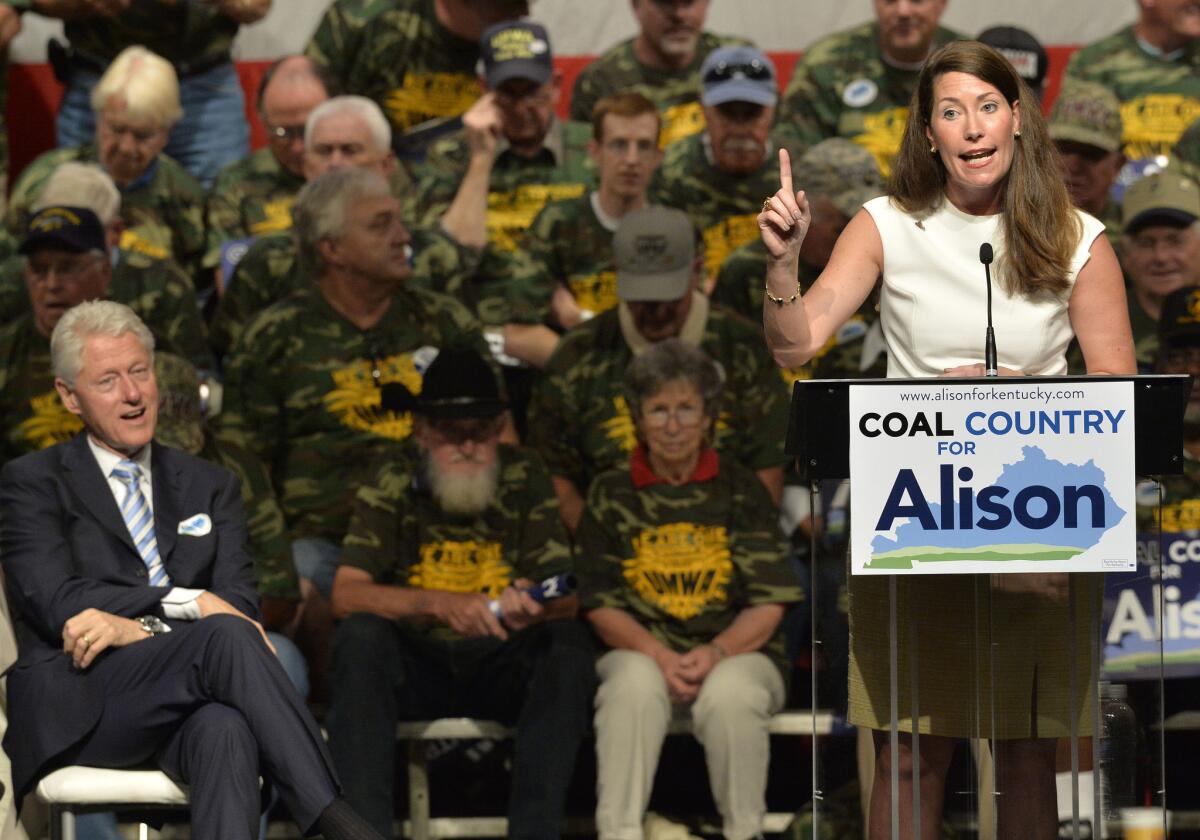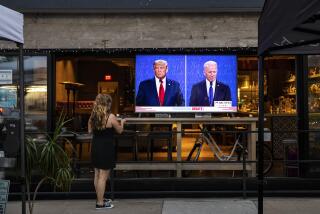Midterm election ads strike increasingly negative tone

As Democrats and Republicans wrestle for control of the Senate, voters are facing an onslaught of political ads around the country that are striking an increasingly negative tone, even more so than in past election cycles.
From the end of August to Sept. 11, analysts at the Wesleyan Media Project found, Democrats were beginning to catch up in volume with Republicans, who had maintained an edge with ads favoring their candidates over the summer months. Over the short span, there were 34,000 pro-Democratic ads aired during that period compared with 29,000 ads favoring Republicans.
With Republicans trying to pick up six seats to gain control of the Senate, and Democrats battling to defend vulnerable candidates, more than half the ads in the Senate contests were negative during that two-week period. Only 27.5% were positive, while the rest featured a contrast between two candidates. In studying the same time frame in 2010 and 2012, Wesleyan researchers found that the negative and positive ads then were more evenly balanced.
The highest number of ads airing over the late August to mid-September period were in the hotly contested Senate race in Kentucky, where Republican Minority Leader Mitch McConnell is fending off a challenge from Democrat Alison Lundergan Grimes. Grimes won attention this week with a new ad in which she distances herself from President Obama while skeet shooting.
Closely following Kentucky in volume were North Carolina, Michigan, Iowa and Louisiana. The hottest media market of the political cycle was the Denver metropolitan area, which aired some 5,600 ads during the two-week period. The Denver suburbs are the epicenter of two hot races, for governor and Senate.
The number of ads aired in the heated Florida gubernatorial contest between Gov. Rick Scott, a Republican, and former Florida Gov. Charlie Crist, a Republican-turned-Democrat, outpaced any other governor’s race in the country, with 14,237 ads airing over the two-week period. The Texas gubernatorial race was a distant second with 8,380 ads.
Though Obama’s healthcare law has receded a bit in the political debate, it is still a main focus of many of the political ads airing around the country.
Unfortunately for voters who already are tired of seeing such ads, the real onslaught may be just beginning. Both Democrats and Republicans reported strong fundraising months in August, arming them with resources to help their candidates through the fall.
The Democratic Senatorial Campaign Committee raised $1.6 million more than the National Republican Senatorial Campaign Committee in August, with a total of $7.7 million to the NRSC’s $6.1 million.
Overall, the Democratic Senatorial Campaign Committee has raised more than $111 million for the election cycle — about $29 million more than the NRSC. The Republican committee had about $19.9 million in cash on hand to more than $25 million for the Democrats.
This year, Democrats are investing $60 million in their so-called Bannock Street Project, an effort to boost turnout among minorities and women voters who generally turn out in lower numbers in midterm elections.
With Republicans trying to pick up the seats they need to wrest control, Rob Portman, the vice chair of the NRSC, made a recent trip to California to brief donors on the toss-up races. He told them that five states —Arkansas, North Carolina, Louisiana, Iowa and Colorado — were “on the knife’s edge,” and said raising the resources needed to compete in those states would be crucial to Senate control.
Twitter: @MaeveReston
More to Read
Start your day right
Sign up for Essential California for news, features and recommendations from the L.A. Times and beyond in your inbox six days a week.
You may occasionally receive promotional content from the Los Angeles Times.







